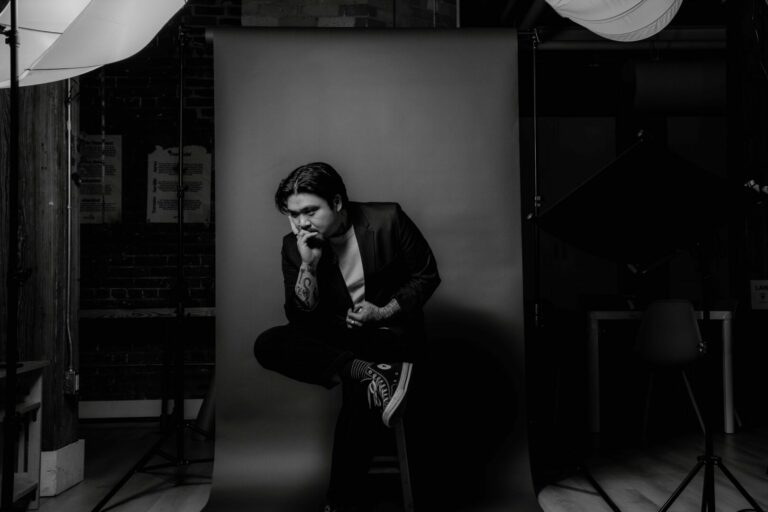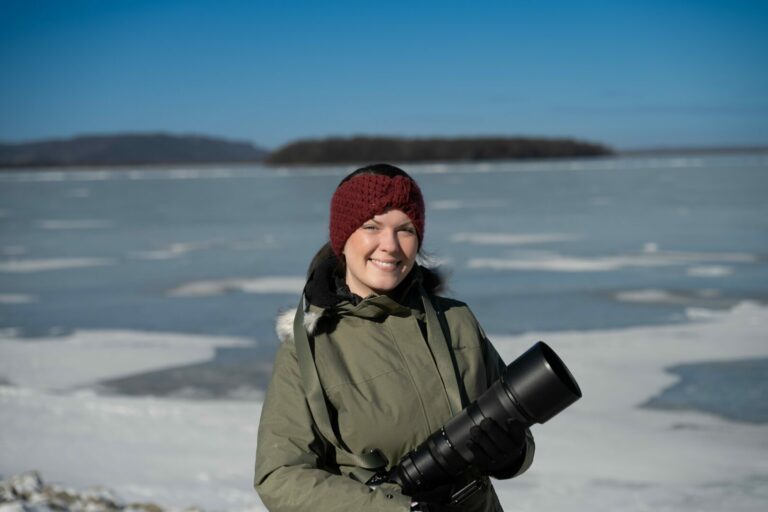We caught up with the brilliant and insightful Maty Young a few weeks ago and have shared our conversation below.
Hi Maty, so excited to have you with us today, particularly to get your insight on a topic that comes up constantly in the community – overcoming creativity blocks. Any thoughts you can share with us?
I’ve got a few tricks up my cinema camera wielding sleeve.
First thing, I make sure I’m doing something film-related every day. Even if I’m not feeling super inspired, I might review scripts, edit a little, or just play around with my camera. Keeping in the groove is super important.
Talking things out is a big help too. I’ll chat with a friend or a fellow filmmaker about where I’m stuck. Sometimes, they’ll see something I missed, or just talking it through sparks a new idea.
Timing can be key. I’ve noticed I’m more creative at certain times of the day. Like, early morning is my magic hour for brainstorming new ideas.
Distractions? They’re the worst. When I’m working, I try to cut out all the noise — turn off my phone, clear my workspace, really zone in on what I’m doing.
If I’m stuck on a particular scene or part of the script, I’ll jump to a different section. Sometimes working on the ending or a middle scene gives me a fresh perspective.
Changing my environment helps a ton. If I’m not feeling it in my usual workspace, I’ll head outside, or even just rearrange my room. A new setting can bring new ideas.
Reading scripts or watching films can be really inspiring. It’s like seeing through another filmmaker’s eyes for a while.
When I’m really in a rut, I do something totally different. I might watch a movie, play a game, or just go for a walk. It’s all about stepping away for a bit.
Even doing chores can help. It’s mundane, sure, but it frees up my mind to wander and sometimes that’s when the best ideas hit me.
Freestyling with my camera is another trick. I’ll just start shooting without a plan, letting my instincts guide me. It’s amazing what you can come up with when you’re not overthinking.
Sometimes, I’ll switch up my equipment. If I usually shoot digital, I might play around with an old film camera. Different tools can inspire different styles.
Exercise is great for clearing my head. A quick run or even some yoga can reboot my brain.
Meditating or just some quiet reflection helps me focus and declutters my mind.
I’ve also learned to face my fears. Every filmmaker worries their work isn’t good enough. But you gotta push through that. The first cut is never the final cut.
And finally, accepting that not every project will be a masterpiece is important. Failure’s part of the process. Each project, successful or not, teaches me something new.
Thanks for sharing that. So, before we get any further into our conversation, can you tell our readers a bit about yourself and what you’re working on?
We’ve carved out a niche in the film industry by excelling in a few key areas. Initially, we focused on crafting affordable demo reels for actors. After producing over 100 scenes—handling everything from writing to editing—we’ve become quite adept at it. Our journey then led us to music videos, which really took off after relocating to LA. The access to diverse sets here enhanced our creativity and production values immensely.
Short films are another of our fortes, spanning various genres and budgets. These projects have consistently earned accolades in areas ranging from writing and directing to cinematography and original scores. A significant milestone was our first feature film in 2020, “Single Mother by Choice,” produced by Two Hands Productions. Its acquisition by HBO was a thrilling achievement. Currently, we have several films making the rounds in the festival circuit, with one, “The Outfit,” securing over 30 awards internationally.
What sets us apart are our competitive prices and high-quality output, largely due to the business being run by my wife and me. We’re hands-on with most aspects of filmmaking, bringing in larger crews as needed. This approach keeps costs down and clients satisfied, despite the high stress.
Our quick turnaround is another unique selling point. Clients are often surprised when we promise delivery within a week—a feat made possible by the hard work my wife and I put into our projects. Keeping operations in-house enables this swift delivery.
Awards have become a significant part of our brand’s identity, validating our work and attracting higher-profile clients, actors, and crew members. While accolades aren’t everything, they certainly help in building our reputation.
I personally relish creating demo reel scenes. The process of writing, filming, and editing these brief yet impactful moments is incredibly fulfilling. While we’re committed to this work, we’re also actively seeking exceptional scripts. Moving away from a purely commercial mindset, we’re focusing on stories that truly resonate, regardless of budget.
Regarding our recent projects, we’re thrilled to announce a groundbreaking achievement with our short film, “Ex Affliction.” It has earned the distinction of being the first Australian short film to clinch the top prize at the Sydney Women’s International Film Festival. This is a monumental moment for us, showcasing our dedication to crafting compelling narratives.
In addition to this success, we have three other short films that are making their debut on the festival circuit. Each of these projects embodies our commitment to storytelling excellence and cinematic innovation, and we’re eager to see how they resonate with audiences and critics alike.
We’ve also been deeply involved in the production of the upcoming SAG AFTRA feature film, “Spark,” serving as both the camera crew and cinematographer. This project is set for release later this year, and it stands as a testament to our team’s versatility and skill in handling large-scale productions.
Our work in creating actor reel scenes for Hollywood continues to thrive as well. These scenes are not just about showcasing talent; they’re about telling a story in a brief yet impactful way. We pride ourselves on bringing out the best in actors, helping them to shine in their auditions and professional pursuits.
As our portfolio expands, so does our team. We’re continuously on the lookout for fresh talent and new opportunities. Our aim is not just to keep up with the ever-evolving film industry, but to set trends and raise standards. Whether it’s through captivating short films, major feature productions, or actor reel scenes, we’re committed to excellence and innovation in all our endeavors.
If you had to pick three qualities that are most important to develop, which three would you say matter most?
Reflecting on my journey in the film industry, versatility, technological savvy, and networking stand out as the pillars of my success. For those embarking on their own paths in this field, mastering these elements is crucial.
Versatility has been a key strength. My early days juggling acting and music laid a diverse foundation, allowing me to navigate various aspects of the industry with ease. My advice to newcomers: don’t limit yourself to a single role or skill. The more versatile you are, the more opportunities you can seize. Whether it’s learning about different film genres, understanding the technical side, or experimenting with various roles like directing or editing, this multifaceted approach keeps you dynamic and marketable.
Technological proficiency has been another cornerstone. Starting with basic gear and progressively moving to more advanced equipment taught me the importance of understanding your tools. For new filmmakers, I cannot stress enough the value of being technologically adept. In an era where tech evolves rapidly, staying abreast of the latest trends and tools can give you a significant edge. This includes everything from camera equipment to editing software.
Here, platforms like YouTube are invaluable. YouTube has become a powerhouse for learning, particularly in filmmaking. It offers a plethora of tutorials, from basic camera handling to advanced post-production techniques. You can find detailed reviews of the latest equipment, breakdowns of iconic film scenes, and tips from industry professionals. What makes YouTube exceptional is its accessibility and the diversity of content. Whether you’re a beginner or looking to refine advanced skills, there’s content tailored to your needs. Moreover, the interactive aspect of YouTube, where you can ask questions and engage with creators, enhances the learning experience. It’s like having a film school at your fingertips, available anytime.
Networking has been vital in my growth. Building relationships, from actors to fellow filmmakers, has not only expanded my business but also enriched my creative journey. For those starting out, remember that the film industry thrives on connections. Attend industry events, join online forums, and engage with others on social platforms like YouTube. Networking isn’t just about landing your next job; it’s about building a community that supports and inspires you.
In tackling challenges, learning cinematography without formal training was daunting but achievable, thanks to resources like YouTube. The platform’s extensive educational content made it easier to grasp complex concepts and stay updated with industry standards.
The crowded market initially felt overwhelming, but by focusing on quality and continuous learning, including regularly consuming and engaging with online educational content, we established our unique place.
Staying current with rapid technological advancements is an ongoing task. Platforms like YouTube are critical in this respect, offering updates on the latest in cinema tech and practical advice on leveraging these advancements in your work.
For those starting their journey in filmmaking, embrace versatility, deepen your technological understanding, and invest in building a robust network. Utilize platforms like YouTube for continuous learning and stay engaged with the community. The journey in film is a constant learning curve, where passion and a willingness to adapt can lead to incredible opportunities and growth.
As we end our chat, is there a book you can leave people with that’s been meaningful to you and your development?
“Save the Cat” by Blake Snyder has been a transformative book in my journey as a filmmaker, particularly in shaping my approach to writing and understanding the structure of film. This book isn’t just a guide; it’s like a mentor that walked me through the intricacies of compelling storytelling in cinema.
One of the most valuable lessons from “Save the Cat” is the importance of a well-structured screenplay. Snyder introduces the concept of the ‘Beat Sheet’, which breaks down a film into 15 distinct story ‘beats’ or plot points. This framework has been instrumental in my writing, providing a clear roadmap for structuring narratives. The beats, such as the Opening Image, the Midpoint, the All is Lost moment, and the Final Image, serve as checkpoints that ensure the story remains engaging and cohesive from start to finish.
Another impactful aspect is the emphasis on the titular concept, ‘Save the Cat’. This refers to the idea of creating moments where the protagonist performs an action that makes the audience like them, usually by doing something morally or ethically good – like saving a cat. This simple but powerful idea has influenced how I develop characters, ensuring they are relatable and empathetic, thus forging a stronger connection with the audience.
Snyder’s discussion on the different types of movie genres in “Save the Cat” also broadened my perspective. He categorizes movies not just by traditional genres like comedy or horror, but by the nature of the story’s structure and character arcs. Understanding these categories, from ‘Monster in the House’ to ‘Golden Fleece’ and ‘Dude with a Problem’, helped me in conceptualizing stories and identifying the core elements that make them effective within their respective genres.
The book also delves into the art of pitching. Snyder’s method, the ‘logline’, taught me how to distill a story down to its essence – a crucial skill in pitching film ideas. A good logline is not just a summary; it’s a compelling teaser that captures the plot’s stakes and the protagonist’s journey. This skill has been essential in presenting my ideas to producers and collaborators, ensuring clarity and excitement about the project’s vision.
Furthermore, “Save the Cat” emphasizes the need for a strong theme. Snyder advocates that every great movie is trying to say something about the world, a message or truth about life. This has led me to be more intentional about the themes in my films, ensuring they are not just entertaining but also carry a meaningful message or question that resonates with the audience.
Lastly, the idea of ‘The Board’ from the book has been a practical tool in my writing process. This involves physically mapping out the beat sheet on a board, allowing for a visual representation of the screenplay’s flow. This method has helped me in organizing my thoughts and ensuring that each part of the script contributes to the story’s overall progression.
Can’t stress enough that, “Save the Cat” has been much more than a book for me; it’s a guide that has profoundly shaped my approach to film writing. The lessons on story structure, character development, genre understanding, pitching, thematic depth, and organizing ideas have not only improved my screenwriting skills but also enhanced my overall filmmaking process. It’s a book I often return to, finding new insights with each read, as it continues to refine my craft in the ever-evolving landscape of cinema.
Contact Info:
- Website: www.youngonestudio.com
- Instagram: https://www.instagram.com/youngonestudio?igsh=YzVkODRmOTdmMw%3D%3D&utm_source=qr
- Facebook: https://www.facebook.com/MatyJY?mibextid=YMEMSu
- Linkedin: https://www.linkedin.com/in/matyjyoung?utm_source=share&utm_campaign=share_via&utm_content=profile&utm_medium=ios_app
- Youtube: https://www.youtube.com/@youngonestudio











Image Credits
Maty Young




